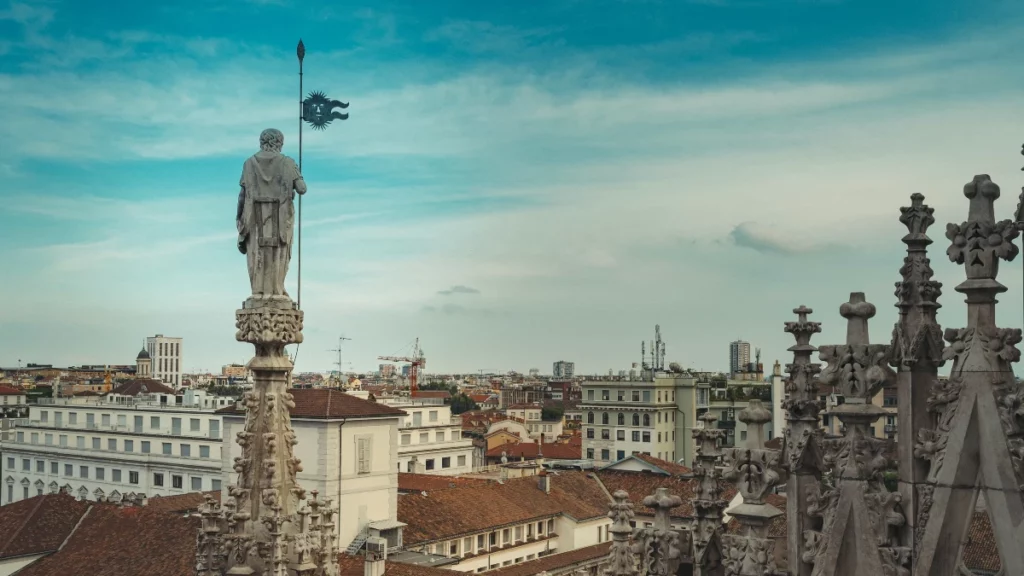
The Duomo di Milano (also known as the Milan Cathedral) represents Milan, the administrative center of Lombardy.
Over numerous centuries, the cathedral was constructed in various divergent styles.
One of Italy’s most stunning and recognizable structures, Milan Cathedral’s interior is intricately built and has a white external marble finish.
Here are ten surprising facts about Duomo di Milano.
Table of Contents
Duomo has the maximum number of statues
Of all the buildings in the world, Milan Cathedral has the most statues.
Along with saints and biblical characters, some of the most popular statues are that of the sirens with double-ended fishtails, Primo Carnera’s picture as a boxer-athlete, Benito Mussolini’s face, etc.
The Gothic style is evident in its elegant appearance, which includes approximately 3,400 statues plus 700 marble figures and 135 grotesque gargoyles.
The 11,700 square meters of the cathedral are covered with these art pieces (125,937 feet).
There is also a statue called Lady Liberty that resembles the well-known Statue of Liberty.
It took a long time to complete
Milan Cathedral took six centuries to build. The last element of the Duomo di Milano was completed on 6 January 1965, even though the building began in 1386.
Seventy-eight architects designed Milan Cathedral, which took over a thousand people to finish.
| Best Milan Cathedral tickets | Cost |
|---|---|
| Duomo di Milano rooftop tickets | €17 |
| Duomo di Milano, Rooftops & Museum | €20 |
| Fast Track: Duomo di Milano, Rooftops & Museum | €35 |
| Duomo di Milano & Duomo Museum | €11 |
| Guided tour: Duomo, Rooftops & Archaeological Area | €35 |
| Best of Milan tickets (Duomo, The Last Supper & Teatro alla Scala) | €99 |
The Cathedral has French King Bonaparte’s statue
Gian Galeazzo Visconti, the Lord of Milan, established the Veneranda Fabbrica del Duomo in 1387 to oversee the planning, construction, and maintenance of the Cathedral.
However, Visconti later decided to use Candoglia marble to build the entire structure, posing a new problem for the Italian Fabbrica.
They had to hire Central European Gothic-trained architects, sculptors, and stonemasons outside Italy to complete the magnificent project. Leonardo Da Vinci was part of the architecture, and this course of events gave rise to the distinctive Gothic style of the Duomo.
Finally, the Cathedral was finished during the reign of Napoleon Bonaparte, and that’s why one of the many spires has a statue of Napoleon atop it.
The rooftop of Milan Cathedral is a must-see attraction for anyone visiting Milan. It offers a unique perspective on the city and its architecture and a glimpse into the history and art of the cathedral.
A canal system was built to transport the marble
The Candoglia Quarry, located about 90 km (56 miles) northwest of Milan, provided the building materials for the cathedral.
The masons and architects had to devise a quick way to get the marble to the site.
The marble was transported to Milan along the rivers, and canals were constructed when the rivers ceased.
The canals remained after construction and eventually became a tourist destination.
The Navigli canals are now a part of the city, surrounded by stores, bars, and street markets.
Recommended Reading: What’s inside Duomo Di Milano
It houses the largest organ in Italy
The current iteration of the Cathedral’s organ was added in 1938.
Housed within the structure’s majestic naves, it comprises five bodies and 15,800 pipes, the tallest of which measures over 9 meters (29.5 feet), while the smallest measures only a few centimeters.
The height makes it the largest organ in Italy and the second-largest in Europe – the first being the organ of Passau Cathedral in Germany.
Saint Bartholomew Statue
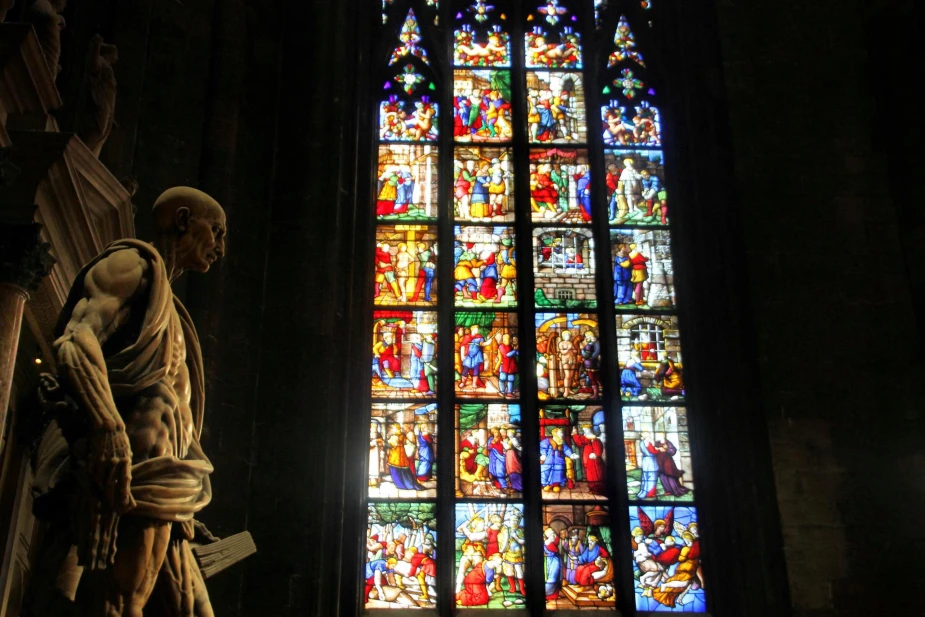
Among the thousands of sculptures at the Duomo, Saint Bartholomew’s statue will undoubtedly attract your attention.
He was skinned alive for proclaiming the gospel and was one of Jesus’ apostles.
His statue is inside the Church and covered in his flesh while carrying a book.
Sundial in Milan Duomo
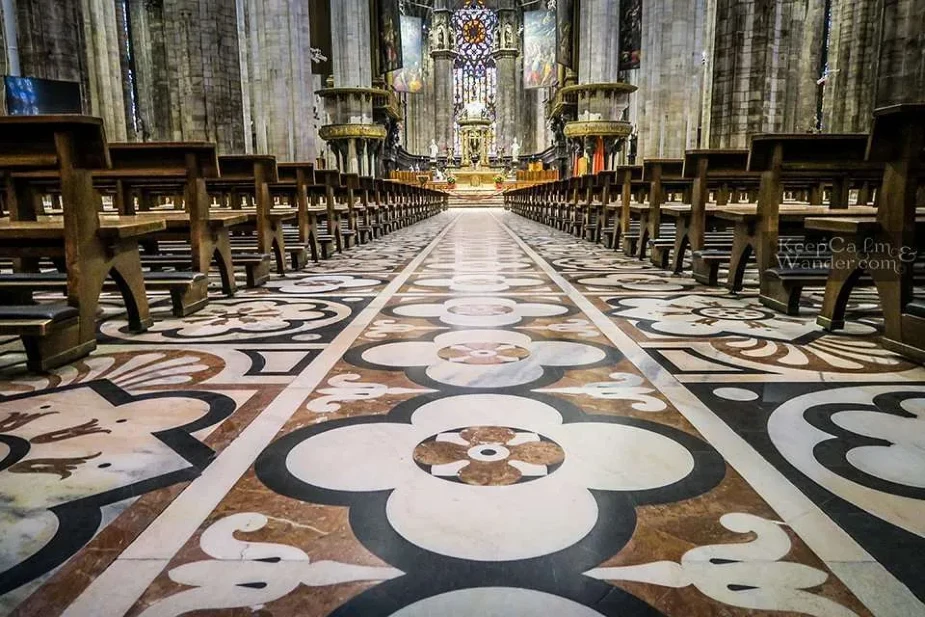
Milan Duomo’s Sundial was built in 1786 by the astronomers of Brera, and it is now located on the floor beside Duomo’s main entrance.
On the opposite wall is a hole through which a ray of sunshine enters and strikes the clock.
The centuries-old sundial is still functional and is used to set clocks around the city.
The stained glass windows of Milan Cathedral are a testament to the skill and creativity of the artists and artisans who created them.
Jesus’ crucifixion nail
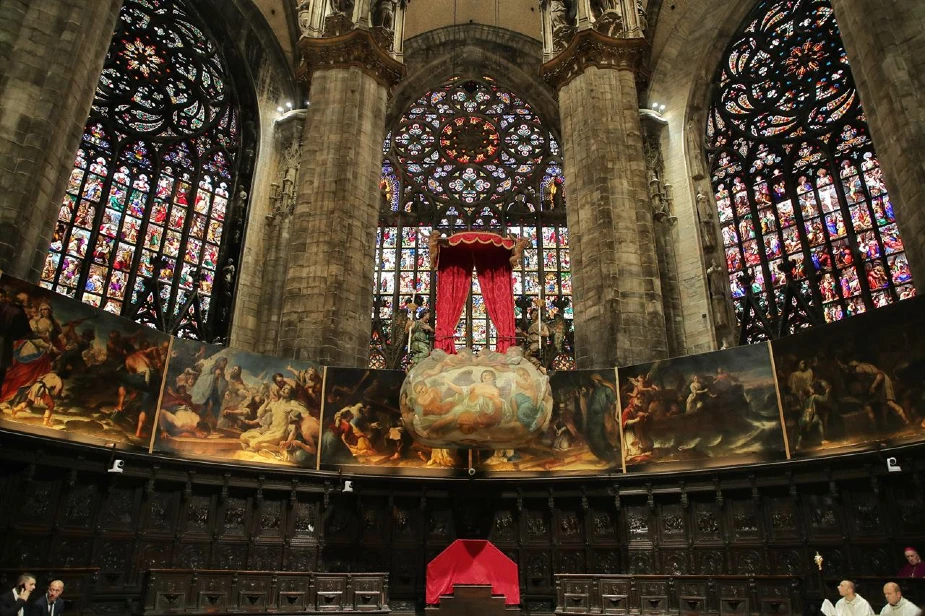
“Santo Chiodo” (Holy Nail) is the most important relic owned by the Archdiocese of Milan.
It is supposed to be a nail from the True Cross, and believers worldwide come to see it.
The archbishop of Milan climbs to the top of the tower every year on a Saturday closest to September 14 to recover the nail.
Every year, the nail is taken off and displayed to the public for three days; often, this occurs during the Ritual of the Nivola festival.
Leonardo da Vinci invented the elevator used to get the nail because he disliked mounting ladders.
The absence of the Bell Tower
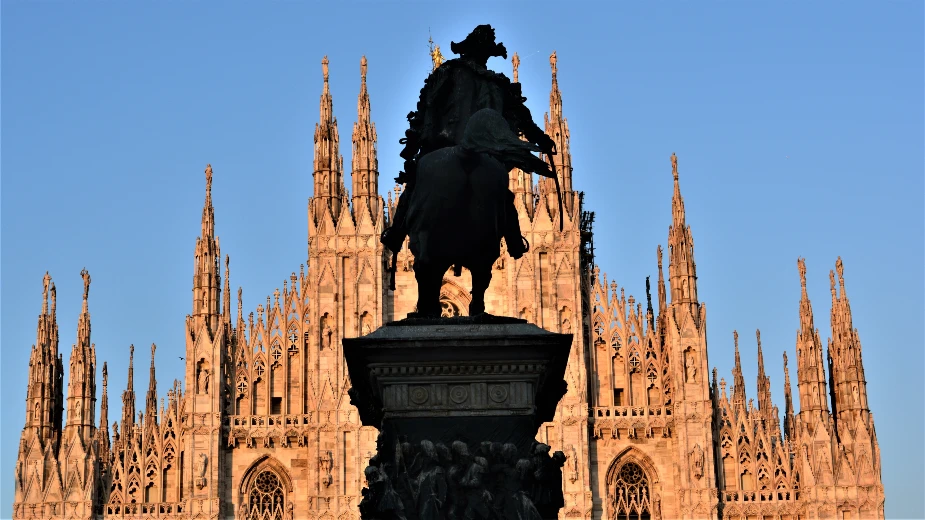
The absence of any observable bell towers distinguishes the Duomo from most other churches around the globe.
The Duomo’s bells aren’t visible, yet they exist.
However, even locals might not recall them as the bells are only rung a few times a year to prevent the vibrations from damaging the church’s structure.
Archaeological ruins beneath the Church
The site of the Duomo was home to two churches and a baptistery during the Roman era when Milan was known as Mediolanum.
The historic Santa Maria Maggiore Basilica, Santa Tecla, and San Giovanni alle Fonti Baptistery were all located here.
On the eve of Easter in 397, St. Augustine was baptized by St. Ambrose in the first octagonal-shaped baptismal font in Christian history.
At the cathedral’s archaeological area, it is still possible to see St. Tecla’s ruins and the baptistry’s 8-sided design.
Church’s devotion to the female deities
The church was constructed over the ruins of two earlier churches dedicated to female deities, Santa Tecla and Santa Maria Maggiore, and a former religious sanctuary for a female Celtic deity named Belisama.
The church preserved this female connection even if the paganic temple is no longer in use by using the Virgin Mary (Madonnina) image, keeping with a pattern also found in other Christian structures.
The Madonnina was covered with a cloth for five years during World War II to prevent it from becoming a convenient target for fighter-bombers.
We recommend: The guided tours of Milan Cathedral offer a unique and informative experience for visitors who wish to learn more about this iconic landmark’s history, art, and architecture.
